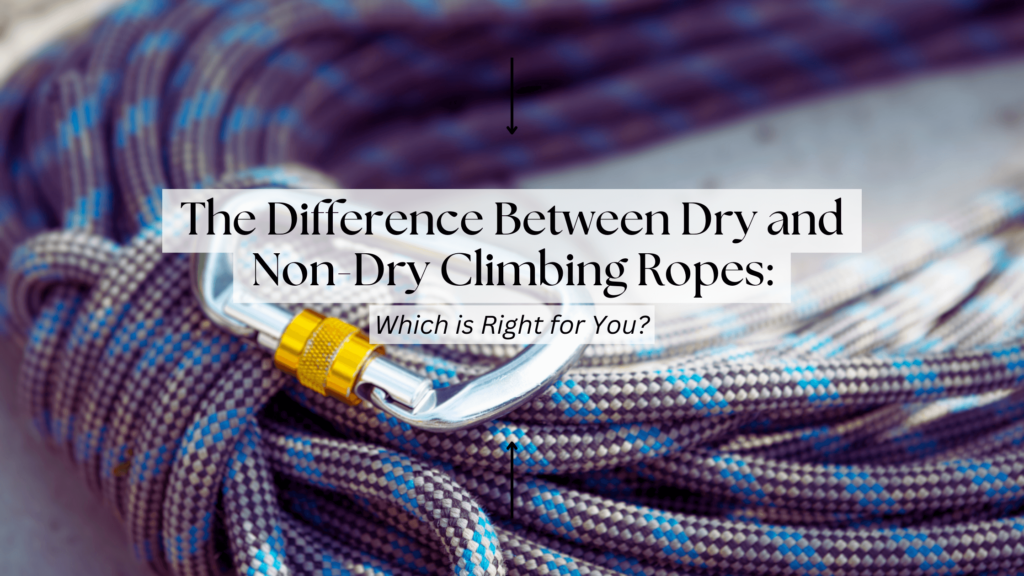When choosing climbing gear, it’s essential to buy the correct equipment for the activity you’re doing. You wouldn’t buy an ice axe if you’re only into sport climbing, right? Buying a climbing rope is the same; you want it tailored for what kind of climbing you’ll be doing.
There are two types of climbing ropes one can purchase:
Dry Rope
Non-Dry Rope
The names are a little tricky, but it’ll make sense. Climbing ropes are classified by their ability to repel water, diameter, and length.
Dry Rope
Dry ropes are manufactured with water-repelling properties. The rope’s sheath (The outside of the rope) is built with a dry treatment, which means it is created with individual fibers designed to repel water. Once the sheath is dry-treated, it protects the fibers inside from absorbing water and expanding.
When To Use a Dry Rope
Because of their water-repelling properties, dry ropes are used in conditions when your rope may get wet. Ice climbing, mountaineering, and alpine climbing are times when you’ll want a dry rope or if you enjoy the challenge of climbing in the rain. Because these ropes are designed to resist water entry, they are more durable than non-dry ropes, meaning they’ll last longer. However, the drying properties on a dry rope cause the rope to cost more, so there are pros and cons to buying each style.
Non-Dry Rope
A non-dry rope is the opposite of a dry rope. It isn’t made with water-repelling properties. If your rope gets wet, it will expand and get heavier, making it harder to pull through your device or pull up to clip. They also lose their dynamic strength when wet, making a fall much harder. However, your rope can dry out and return to its normal properties after time, so getting it wet isn’t the end.
When To Use a Non-Dry Rope
Any time you’re not planning to expose your rope to water is an excellent time to use a non-dry rope. That will be climbing in the gym or at the crag on a nice day. A non-dry rope is more affordable than a dry rope because it isn’t coated with extra treatment; therefore, they are popular among climbers. As mentioned, if your rope gets wet, it mustn’t be retired. Just wait until it’s fully dry before climbing on it again.
When Buying a Rope
Look for the type of rope you’ll want for the activity you’re planning to do. Consider that dry ropes will often be more expensive than non-dry ropes because of the chemical treatment applied to repel water, but also ensure you’re buying the correct length and diameter you want. If you only plan to climb with it at the gym where the walls are 60 ft high, then you don’t need to buy a 70-meter rope.
Also, consider the diameter of the rope you want to purchase. A standard size among beginners is 9.8, but half-ropes can be between 8-9mm, and twin ropes can be between 7-8mm. The thinner the rope, the easier it will slide through the belay device. It’s recommended you buy a thicker rope until you’re incredibly comfortable belaying if you’re new to climbing.
